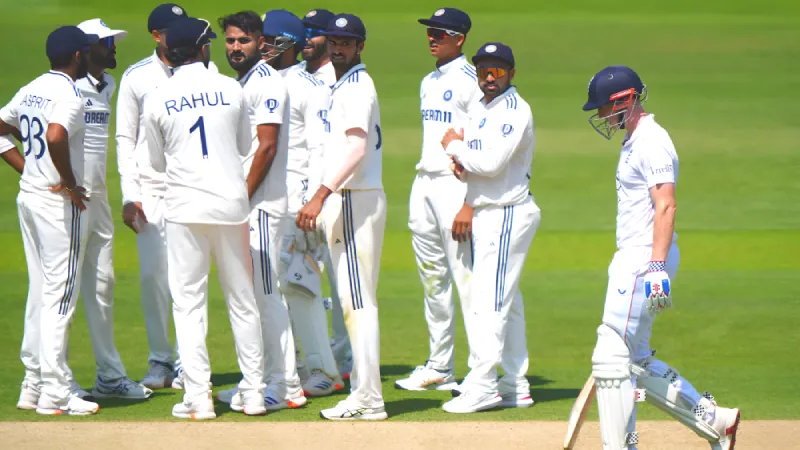If you’ve seen any cricket Test match lately, but most notably the Lord’s Test match between India and England, you’ve likely heard plenty of talk about “lost overs” and slow over rate. Fans and commentators alike express disappointment about how cricket somehow “loses” minutes of precious play time, leaving us feeling cheated out of all of that wonderful ball-by-ball cricket. But is all of this hysteria about over-rate fair? Or is it a case of fans being oblivious to the larger picture? Let’s explore why we shouldn’t worry about overrates too much and, dare I say it, perhaps overrate the concern over overrates.
The Real Deal Behind “Lost” Overs: It’s Not Just About Speed
To begin with, a common misconception that needs to be clarified is that over rates are not calculated each day or by each innings, but for the match as a whole. This means if a bowling team gets the other team’s innings done in under 80 overs, the ICC is not disappointed with them if they do not bowl 90 overs a day, because in case we did it usually means we have had a bucket load of entertainment, including wickets, drama and tension – as quickly as it can be enjoyed.
The ICC has allowances for wickets (yes, taking nine wickets leads to real excitement, and comes with an 18-minute allowance!), drinks, injury breaks, DRS, ball changes, pitch repairs, and more! In total, you can lose 15 minutes a day without it being penalised. So when we see “10 overs lost today,” often this is rough, and does not reflect what has happened!
Also read:- Kohli? Bumrah? Too Modern for Nick Knight’s Time Machine XI
Fast Bowling vs. Spin: The Over Rate Tug of War
Here’s another perspective to consider. Test cricket is not just about speed and quantity of overs; it is also about quality and intensity. Fast bowling is hard work—physically taxing, and slow on the reset delivery. That is why the ICC and match officials regularly give the teams the benefit of the doubt on over rates where they bowl a lot of overs through their fast bowlers.
In contrast, spin-heavy attacks typically provide quicker over-rates. India, in their second innings at Lord’s, used even more spinners and got through their overs quicker than England could with an injured spinner. So, it isn’t always about only getting through overs quickly but actually responding in terms of strategy and bowling style to conditions and match situation.
When Slow Over Rates Cross the Line: Gamesmanship or Genuine Struggle?
Not all slow over rates are innocent, right? Teams are slow sometimes as a deliberate tactic to slow the game down and gain a competitive advantage – this is often seen a being almost part of the game. This comes to life when the games are on a knife-edge or the pressure’s dialed up to max. Other times, slow over rates are reflective of poor preparation and/or fitness.
However, the truth is, match officials are conscious of this and generally keep an eye, but a hands-off approach to over rates. And persistently slow over rates will have punishments like deduction of World Test Championship points, but they generally pertain to slow over rates of excessive lengths, causing a disadvantage.
So, before we all hop on the slow-over-rate hate train to crucify it, we should consider that some “lost” overs simply come with cricket—and the game evolving, battles getting tougher, bowlers competing, and games getting harder to predict.
To catch up on the most current news on all of your favorite thrilling cricket updates, visit Six6slive to access our comprehensive Latest News, insightful analysis, and updates. Connect with the action now to make sure you never miss out!
